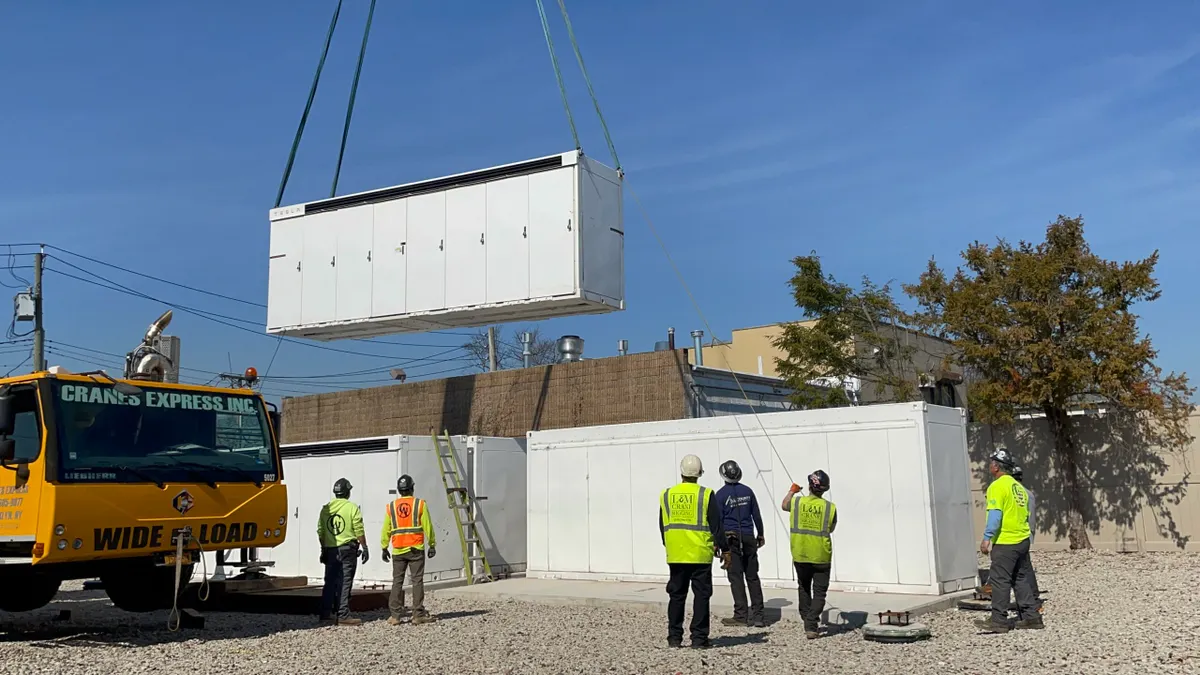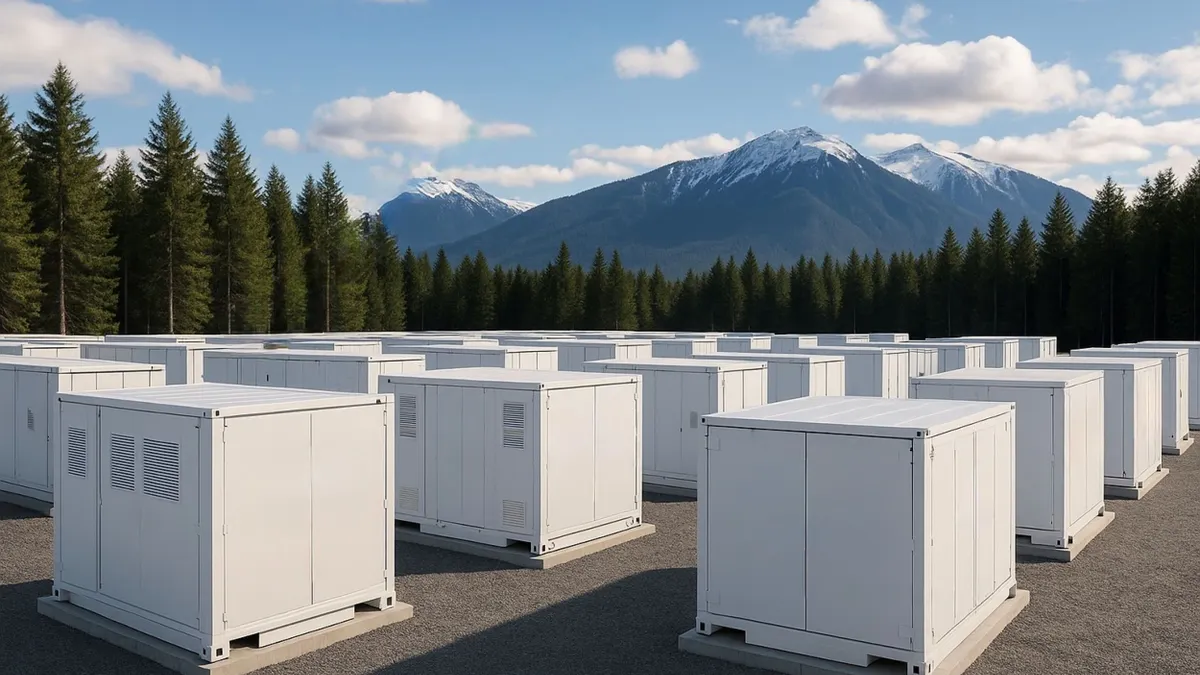Analysis and consulting firm DNV GL earlier this month released a guide for recommended practices related to the safety, operation and performance of energy storage systems.
The goal of the document, released through the GRIDSTOR consortium brought together by the Norwegian consultancy, is to compile a "comprehensive set of recommendations for grid-connected energy storage systems," that is "valid in all major markets and geographic regions, for all applications, on all levels from component to system, covering the entire life cycle."
“We did a lot of in-depth research on existing standards and found very many focus on the components, not the system as a whole,” Haike van de Vegte, senior consultant for new energy technologies at DNV GL, told Utility Dive.
DNV GL argues that the market for grid-connected energy storage is maturing rapidly and that the next stage in the deployment of smart grids will require “clarity and widespread agreement on issues concerning energy storage systems.”
“At DNV GL we believe that actions such as the Recommended Practice [guide] supports the entire industry and global community by offering a single standalone, all-encompassing guideline,” Jillis Raadschelders, head of DNV GL’s renewables and storage department, said in a statement.
The GRIDSTOR guide focuses on three main aspects of grid-connected energy storage: safety, operation and performance. It does not cover chemical or thermal technologies, such as hydrogen and thermal storage, nor does it include electric vehicle batteries at this point.
DNV GL says the GRIDSTOR program offers an independent quality guarantee for the safe implementation and operation of energy storage systems and is drawn from globally accepted regulations and best practices standards such as those from the International Electrotechnical Commission (IEC) and the International Organization for Standards (ISO).
GRIDSTOR is an international consortium of industry stakeholders brought together by DNV GL in 2014. The program was developed with seven partners, including technology producers, grid service providers, energy consultants and universities, with the aim at arriving at global standards. An additional 36 industry players participated in the review process.
DNV GL distinguishes its approach from other standards being developed in the energy storage industry by the fact that it covers a broad array of technologies instead of just one or two battery types, and it takes system level approach.
Other evolving standards
Among the other major initiatives under way to come up with industry guidelines are the performance protocols being developed by Pacific Northwest National Laboratory under the direction of the Department of Energy.
That effort is described as a “subset” of DNV’s guide, according to Vincent Sprenkle, manager of the electrochemical group at the Pacific Northwest National Laboratory.
What PNNL is drawing up for the DOE are not standards — metrics that must be met — but performance protocols that can be used to test performance of any storage device, regardless of technology, on an equal footing, Sprenkle said. “It is like a black box that can be used to test the signal and measure the output.”
The effort began about three or four years ago and three protocols have been released so far with another three on the drawing board and likely to be released this summer.
Sandia National Laboratories also participates in the program by providing the actual testing of storage devices.
Sandia is also doing field work on storage systems and building a database of the results that can be used to update the DOE protocols. “It is a living document,” Sprenkle said.
The Electric Power Research Institute is also weighing in on the issue with its Energy Storage Integration Council, but with a wider mandate that includes system development and grid integration, as well as performance
And, more recently, group known as Modular Energy Storage Architecture in September 2015 began working on energy storage standards. The MESA Standards Alliance looks at the energy storage industry in terms of modularity. The groups say that, as with the early days of the computer industry, the challenge is to come up with standards that would make the different parts and plugs compatible with each other.
A 'global guide' for storage
Van de Vegte says that the GRIDSTOR project looked at those other efforts and purposely referenced DOE’s work.
“We wanted to make it a global guide,” van de Vegte says. “We did not want to completely re-invent the wheel. We wanted to make use of what was already there, and make sure we looked at the system as a whole. You could call it a cookbook approach.”
The IEC, headquartered in Geneva, Switzerland, is also drawing standards for the integration of grid-connect energy storage systems under a working group known as TC 120. Those standards also aim to look at energy storage systems as a whole and at being global.
Van de Vegte says GRIDSTOR looked at the IEC’s work, but says that group is taking more time to release its standards.
A January 2014 document on IEC’s website gives a three to five year time horizon for its work.
Van de Vegte says GRIDSTOR plans to release the new version of its guide next year, which would incorporate more checklists and also include financial methodologies. “The idea is to have yearly updates, but that will depend on whether we will be able to find partners” for the project, he says.
The GRIDSTOR guide, meanwhile, is publicly available and — as DNV GL has done for the oil, gas and maritime industries — provides the basis “to create a level playing field” for the industry, van de Vegte says.
Of course, it also showcases DNV GL’s capabilities in providing certification and advisory work. The company’s roots go back to 1860s when a predecessor company was created to evaluate the quality of ships and deliver the results to stakeholders. More recently the company has advised California in setting up its energy storage targets.
Meanwhile, the storage industry is likely to continue to work with and promulgate a variety of guidelines and standards. Eventually they will need to “come under one roof” Sprenkle said, but fortunately the industry is still young enough that there is not mass confusion because a wide variety of applications and standards have not yet had time to take hold.





















